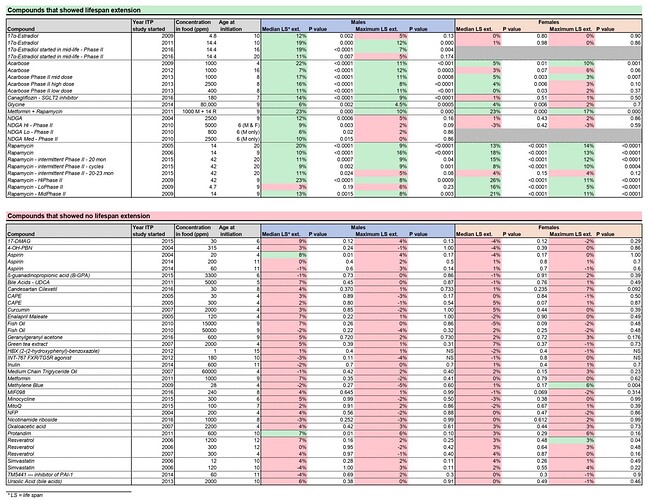Actual study:
2 weeks for a fruit fly is a very long time, as is 3 months for a mouse…
This also worked in mice in the University of Washington’s study, again a short period of dosing, but very high dosing levels of rapamycin. And, 3 months to a mouse, is proportionately like 7 years in a human lifespan. Can you imagine the side-effect profile for people orally taking rapamycin at 27 times current average dosing levels? This is why alternative administration vectors (e.g. injection, intranasal, etc.) need to be thoroughly investigated.
We initially used a treatment regimen consisting of intraperitoneal (i.p.) injections of 8 mg/kg rapamycin daily for 90 days. This dose was selected because we have previously found that it increases survival and alleviates disease phenotypes in short-lived mouse models of dilated cardiomyopathy, muscular dystrophy, and the severe mitochondrial disease Leigh Syndrome (Ramos et al., 2012; Johnson et al., 2013). Based on efficacy in the Leigh Syndrome mouse model and serum drug levels in wild type mice, we estimate that this treatment regimen is comparable to dietary delivery of eRapa at approximately 378 ppm (Johnson et al., 2015), or 27-fold higher levels than initially shown to extend lifespan in mice when continuous treatment is initiated at either 9 months or 20 months of age (Harrison et al., 2009; Miller et al., 2011).
This is what jumped out at me the most: “We also found that the rapamycin treatment had the strongest and best effects when given in early life as compared to middle age. When the flies were treated with rapamycin in late life, on the other hand, it had no effects at all. So, the rapamycin memory is activated primarily in early adulthood.”
As I understand it, this is the counter to previous research, which I believe has demonstrated equivalent benefits in mice regardless of whether rapa was initiated in early or middle age, and which has shown benefits even in elderly mice. I could be remembering wrong, but I think that’s why current thought among self-experimentors is to start rapa in middle age.
In the NIA ITP studies it showed significant effects for Rapamycin when started later in life (middle age) but better results when started younger (equivalent to 20 or 30 years in human terms). The ITP studies in mice are much more robust than this study identified above in flies. The NIA also does 3 independent studies at one time, so the results here are the combination of three simultaneous double blind, placebo-controlled studies. That is why the NIA ITP studies are considered the gold standard of longevity results and why single studies by independent groups are less reliable.
Here are the exact results (click on the image to make it larger and more readable):
More input on this study from Blagosklonny:
Another news story on this research paper:
